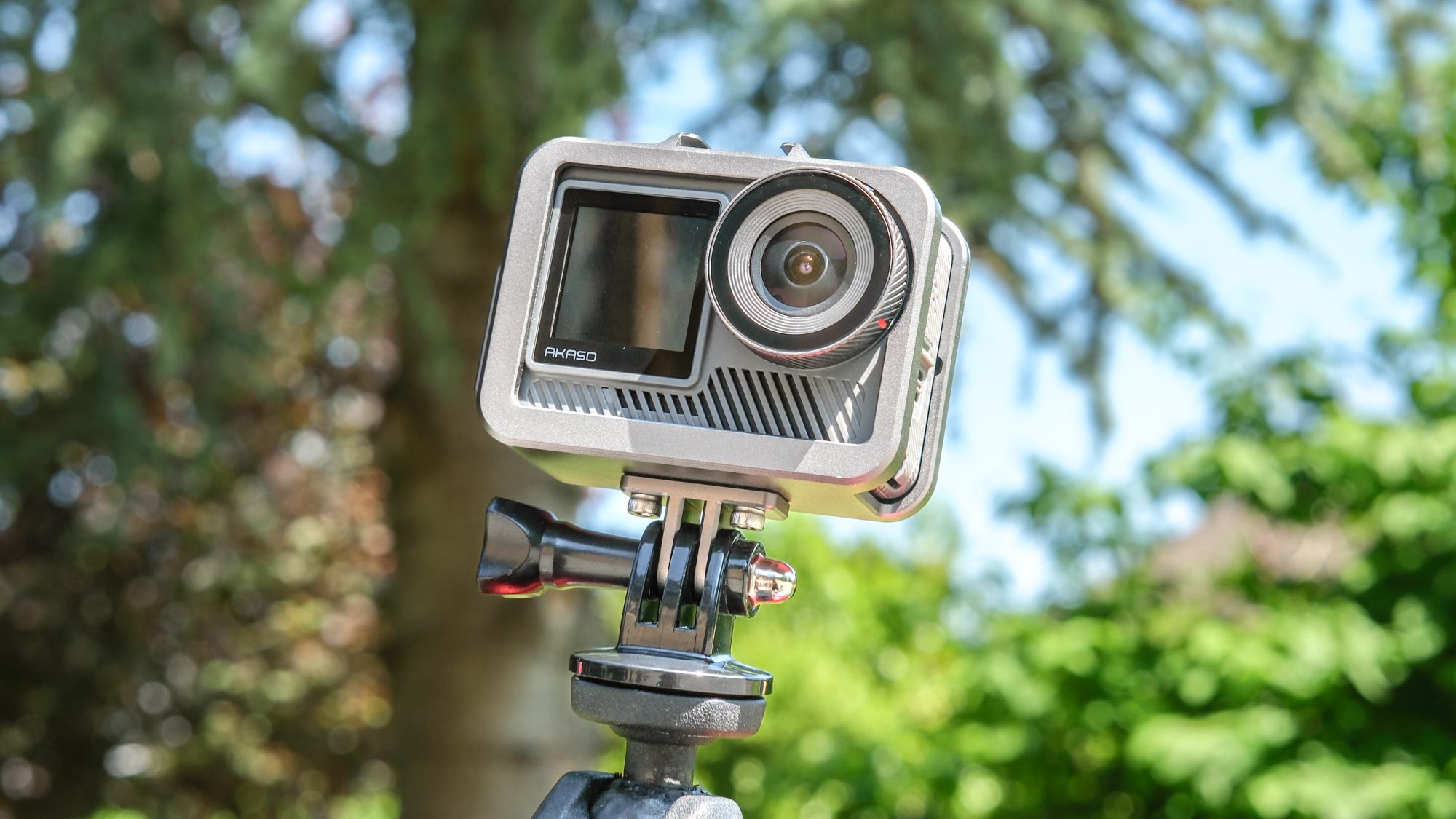
The Akaso Brave 8 Lite is a budget 4K action camera and little sibling of the Akaso Brave 8. While the Brave 8 Lite features a smaller sensor and lower maximum photo resolution, many of its specs are the same as you’ll find on the full fat model. Both shoot 4K/60p, use similar microphones and have the same front and rear screens.
Importantly, the Brave 8 Lite is much cheaper than its older sibling, which is a great starting point. In my Akaso Brave 8 review, I was disappointed that the camera cost as much as it did — at $289, it offered the features and performance of a budget action camera, yet the price of a top tier product like the GoPro Hero10 Black.
At $199, though, the Brave 8 Lite is priced very competitively, which could make it a great budget option if you want a no-frills action camera and can’t stretch to one of the best action cameras. Find out more in our Akaso Brave 8 Lite review.
Akaso Brave 8 Lite review: Price & availability
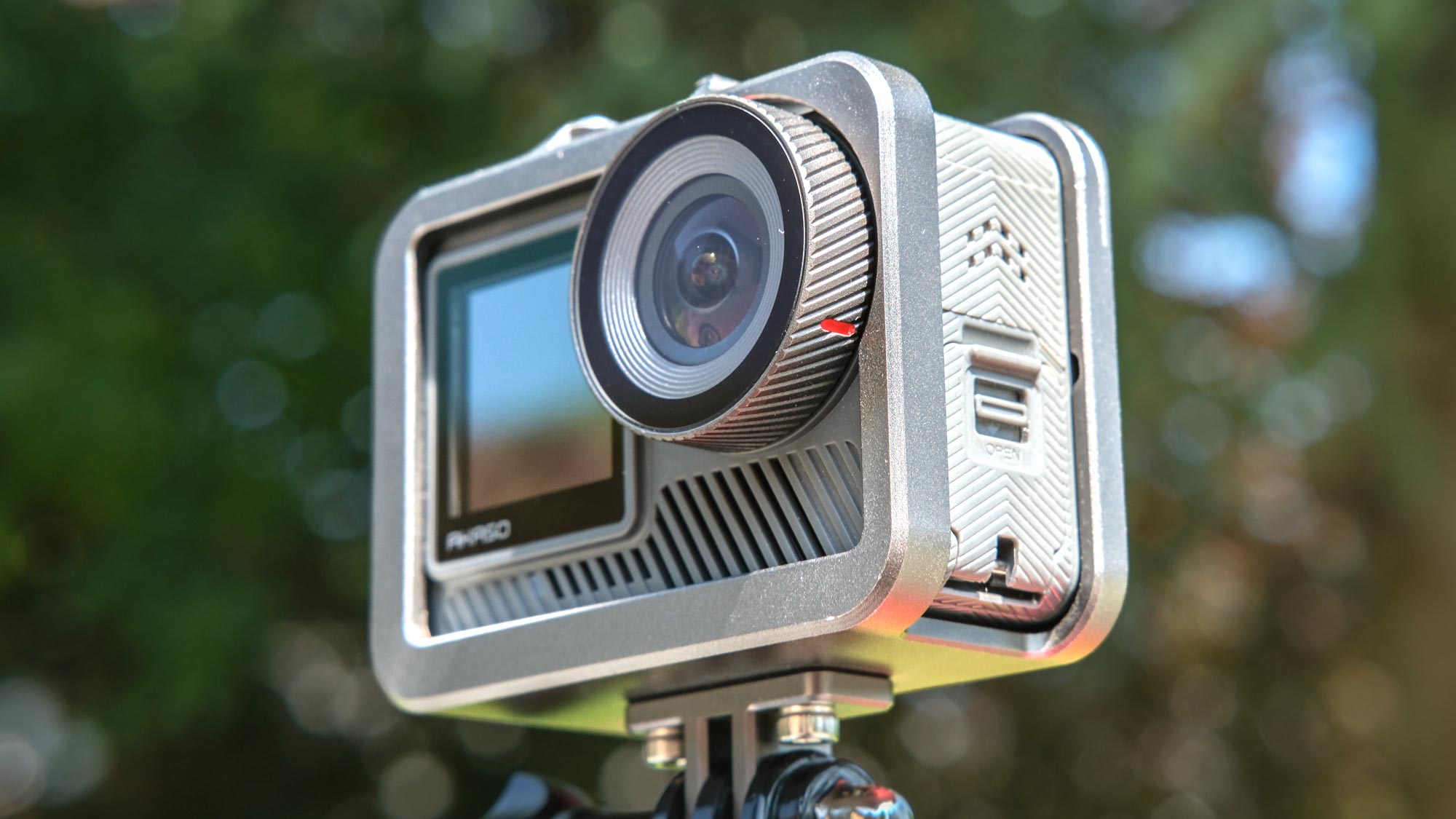
The Akaso Brave 8 Lite costs $199 for the Standalone (camera only) version, and is available now from Amazon. Don’t be put off by the “Standalone” bit — this still comes with a decent selection of basic accessories and mounting options in the box.
There’s a more expensive Advanced kit which features an array of accessories, but you can bet your bottom dollar they’ll be, well, bottom dollar. The Standalone’s included accessories aren’t any better, but at least you aren’t paying extra for them — I’d advise buying the basic kit, figuring out what specific accessories you need and purchasing them separately. There’s no proprietary mounting systems as mounting is all done using the outer cases — a plastic one is supplied — which use standard fork mounts.
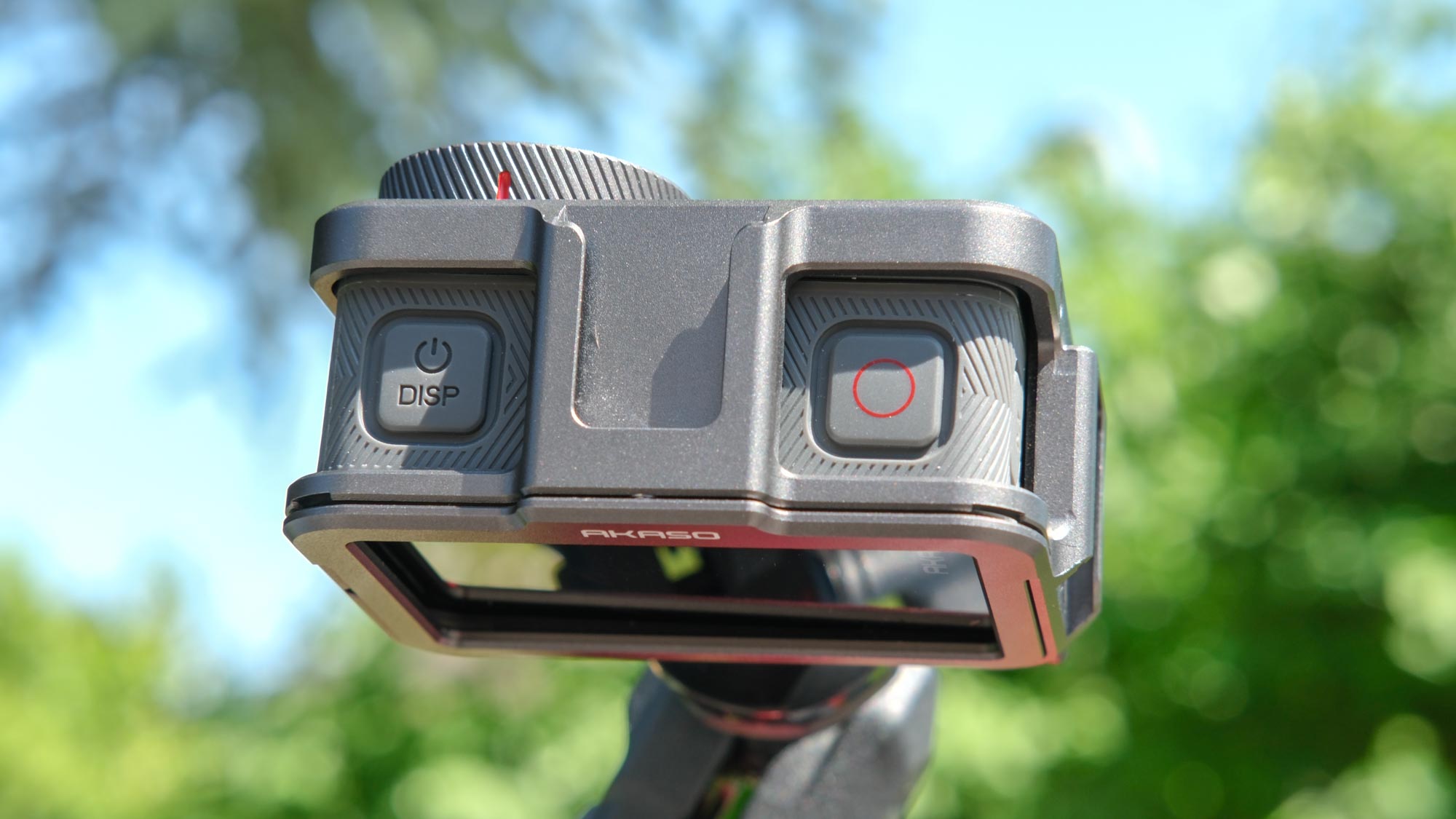
Top on your accessories list should be Akaso’s aluminum mounting case, which features cold shoe mounts for fitting accessories. The standard plastic case my pre-production review unit came with was so loose that the camera visibly shook around inside it — Akaso sent me the aluminum case for testing, which I was quite happy about, as it’s high quality and features two cold shoe mounts to hook up mics and accessories. Akaso told me the standard plastic case would be fixed on production models.
Akaso Brave 8 Lite review: Design & controls
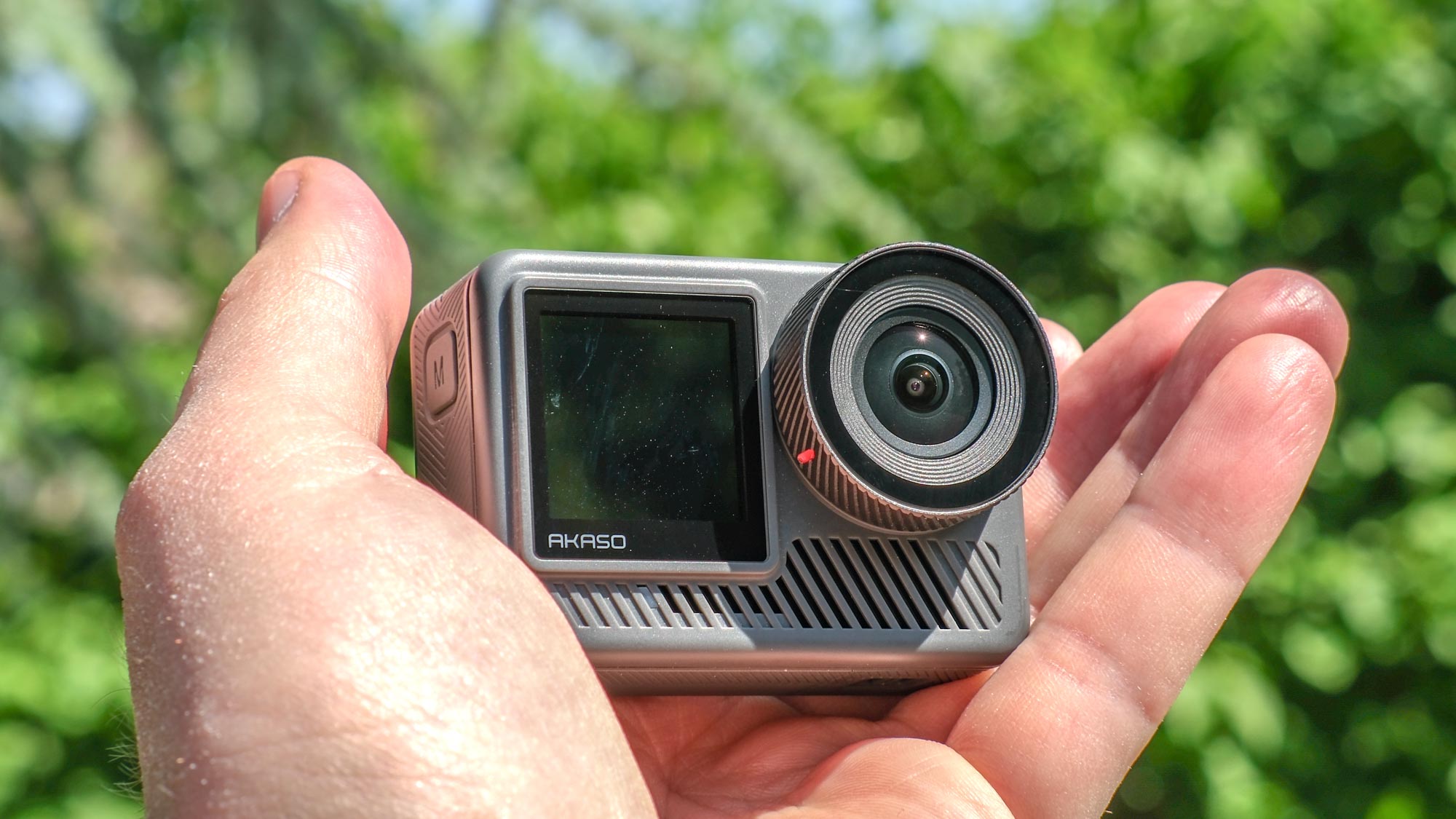
The Akaso Brave 8 Lite looks more or less the same as the standard Brave 8, sharing the same external features and dimensions with only a few aesthetic differences. The action camera is wrapped in cheap-looking grippy gray rubber with a chevron design and red accents. I kind of like it, though: it has a sort of 80s/90s sci-fi vibe about it, like something out of Total Recall (the proper one, not the remake).
It’s a small camera, measuring 2.5 x 1.8 x 1.4 inches and weighing only a fraction over 4 ounces. Despite its “Lite” moniker, though, the Brave 8 Lite is actually a tiny bit heavier than the Brave 8, although that camera was itself super lightweight to begin with. The Brave 8 Lite doesn’t feel too light though — it possesses a sturdiness that you might not expect from looking at it.
Next to the large, removable lens guard is the 1.2-inch front screen, while on the back sits a 2-inch touchscreen. Both screens are bright enough that I had no issues using them on a sunny day, with the rear responding well to the touch. There are three buttons — power/display, record and a quick access M button — all of which are easy to press even wearing thick motorcycle gloves. The Akaso menu system isn’t pretty, but is easy enough to navigate and provides all the controls you’ll need.
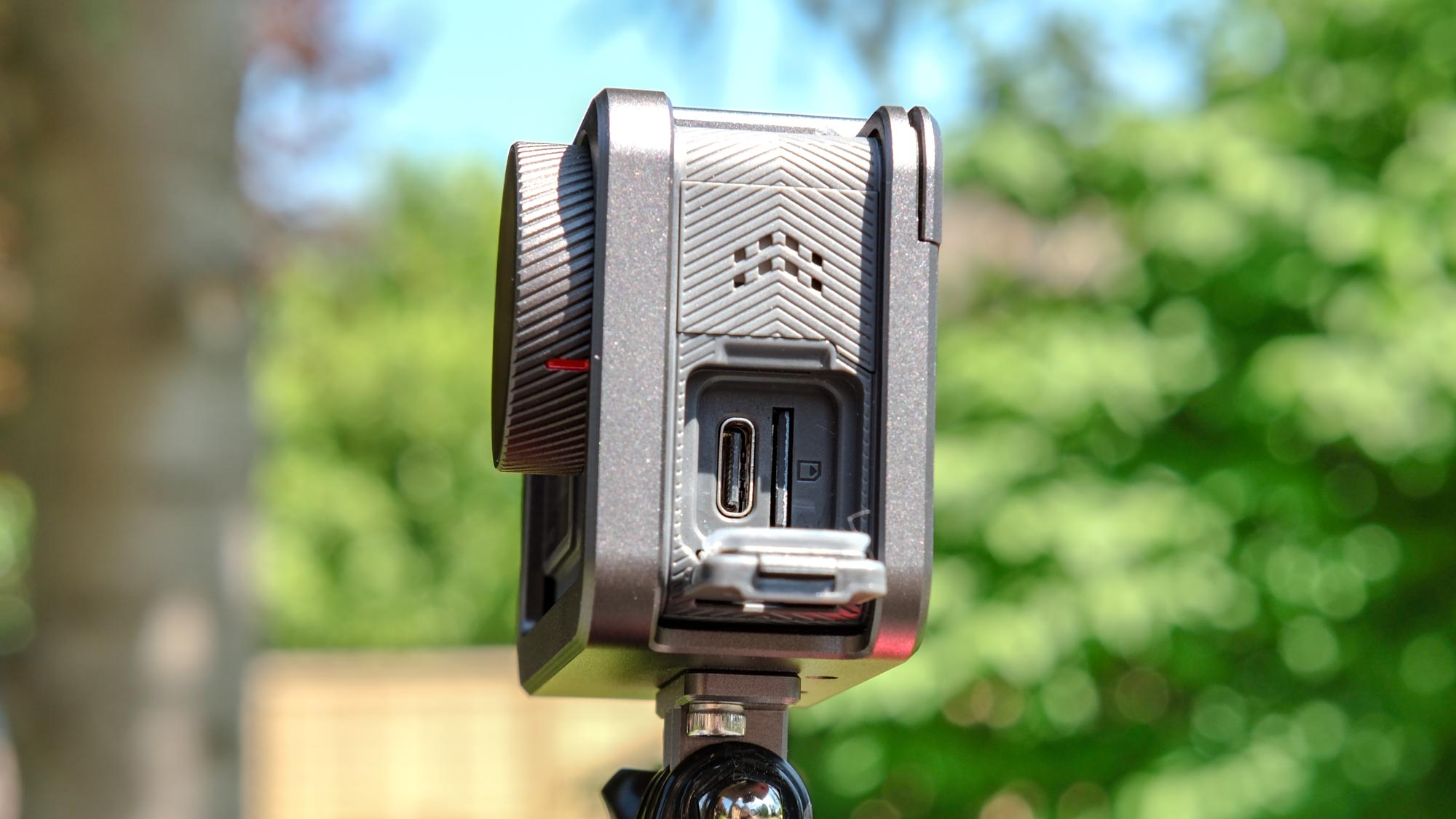
Behind a small hatch on the side of the camera you’ll find a memory card slot and a USB-C port for charging and hooking up accessories. You needn’t charge through the camera, though, as Akaso supplies a dual charging adapter in the box (a rarity these days).
The Brave 8 Lite will survive underwater down to 33 feet — the same as many flagships like the GoPro Hero12 Black. You can buy a waterproof case separately to take it deeper, but if you need a camera for underwater exploits, we’d recommend spending a bit more on the DJI Osmo Action 4, which can be taken down to 59 feet without needing an extra case.
Akaso Brave 8 Lite review: Image stabilization
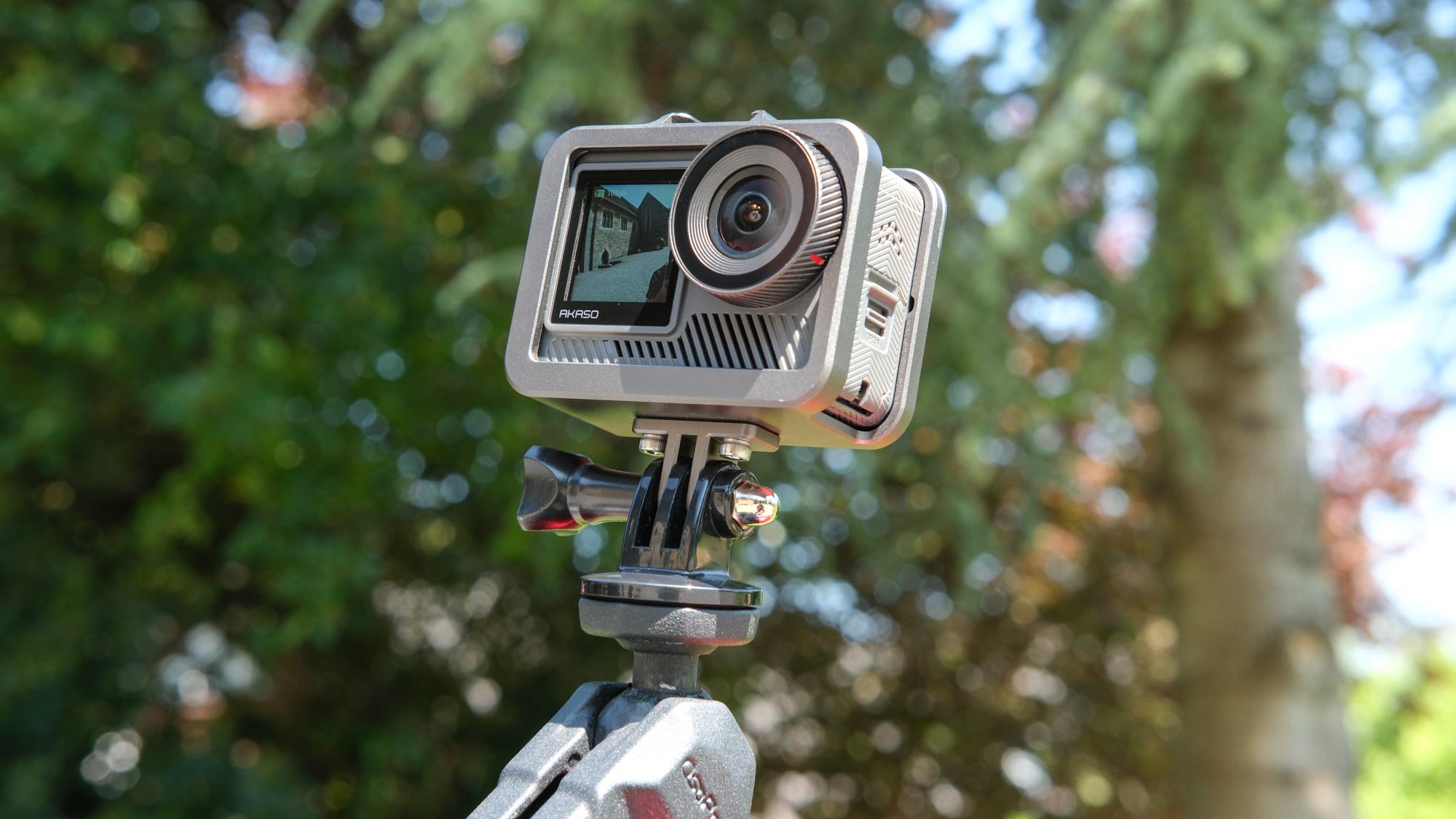
Image stabilization was one of the biggest drawbacks of the Akaso Brave 8 and, unfortunately, it’s the same story for the Lite. Enabling internal image stabilization really does nothing, as you can see from the footage below. The video is incredibly shaky and unpleasant to watch.
That isn’t the full story. When you enable stabilization in camera what you’re actually doing is enabling the footage to be stabilized later down the line in the Akaso Go app. This actually works quite well (see the stabilized version in the Video section), but will be a massive pain if you’re shooting lots of footage. The Brave 8 Lite shoots in 3-minute clips, so you’ll have to run all of those through the app separately before then stitching them together in the best video editing software. This process can be extremely unreliable, taking several goes to work given the jankiness of the app.
Akaso’s main issue with their Brave lineup is stabilization. Fix that, and they’ll be producing worthy budget contenders to undercut the big players. As it is, the Brave 8 Lite can’t be used for any serious content creation that isn’t shot standing still, as the footage is unusable out of camera.
Akaso Brave 8 Lite review: Video performance
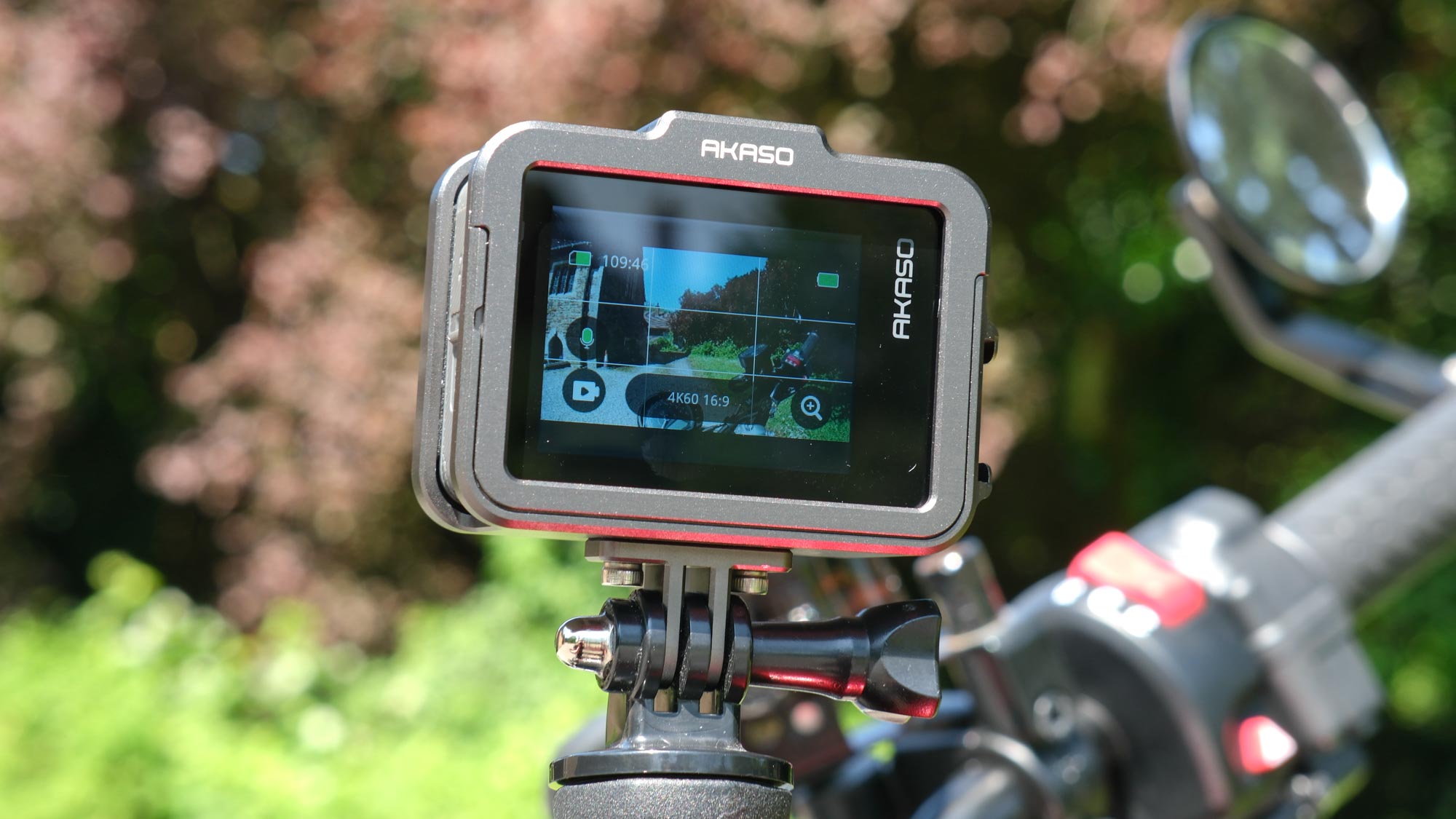
As with the Brave 8, the Brave 8 Lite’s poor internal image stabilization is a real shame, because the 4K video is surprisingly good. The camera does a good job at exposing properly, even on bright days with a wide dynamic range. Although there’s only one color profile, it’s quite pleasing, rendering vivid blue skies and lush green foliage in the footage below (footage stabilized in the Akaso Go app).
Happily, the Brave 8 Lite shoots 4K/60p, so fast paced footage shouldn’t look choppy. While that doesn’t sound as impressive these days as the headline figures coming from flagship rivals, such as the 8K Insta360 Ace Pro, 4K/60p is all most people will really need from their action camera, at least while YouTube still tops out at 4K.
Low light performance is as you can expect from a 1/2.3-inch sensor. It isn’t terrible, but footage is quite grainy at 4K/60p. You can eek out a little extra exposure by dropping down to 4K/30p, which allows the camera to slow its shutter.
Akaso Brave 8 Lite review: Audio performance
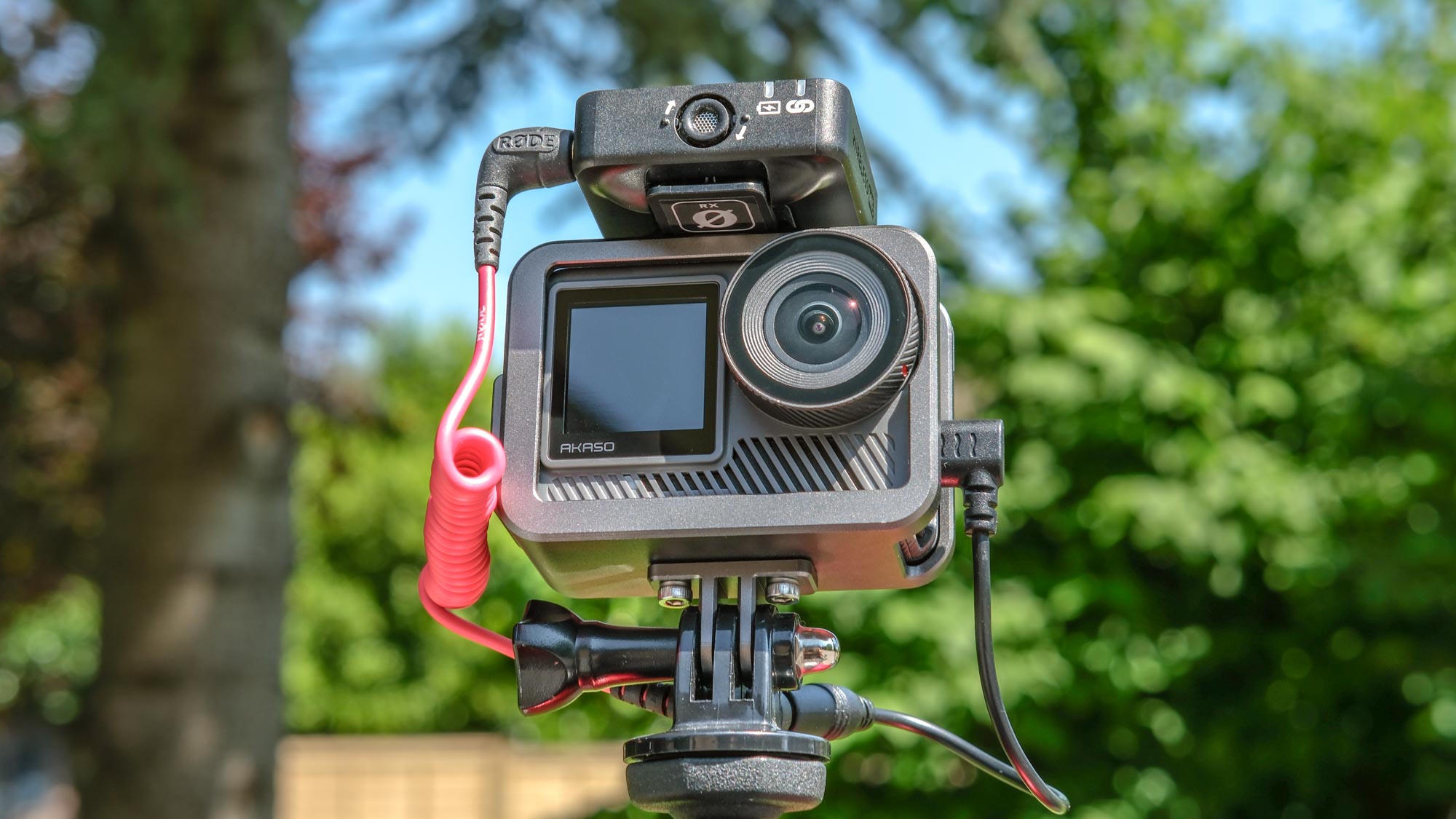
The Brave 8 Lite’s internal microphone performance is poor. It isn’t as bad as the SJCAM SJ20’s mic, but that isn’t saying much. Internal audio is tinny and crackly, with lots of distortion from loud and low frequencies, as you can hear in the sample footage below.
You’ll want to invest in an external microphone, although I often had difficulty getting my Rode Wireless Me to connect (resulting in mute footage, as you can see in the video below) and when I did get an external mic to hook up, the USB-C adapter Akaso supplied experienced connection issues and would crackle (see the clip in the Video section).
Again, if Akaso could only sort out the fundamental basics of what an action camera needs, they’d be in with a serious shot at disrupting this market. Until then, their cameras are not usable by anyone wanting to put out high quality footage.
Akaso Brave 8 Lite review: Smartphone app
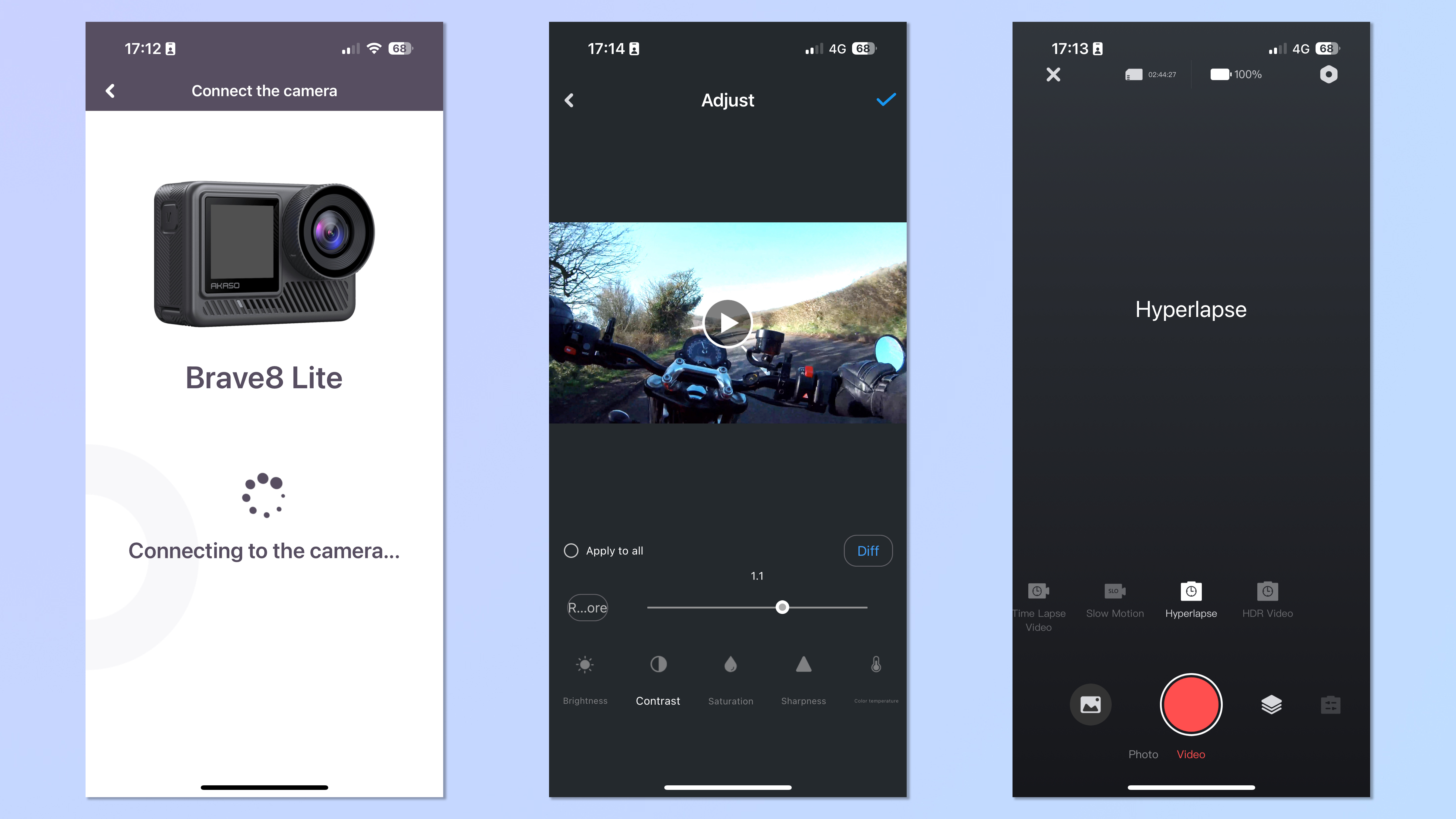
The Akaso Go companion app isn’t the worst I’ve used from an action camera manufacturer — once again, that dubious honor goes to SJCAM. It’s relatively easy to connect to (once you realize you need to tap the Wi-Fi icon on the camera itself to pair) and offers some basic editing features. It also allows you to access video stabilization (although I wish the video were stabilized in camera).
That said, it’s rather unreliable and has a tendency to drop out while transferring videos. It also offers nothing like the features you’ll find from the powerful Insta360 and GoPro Quik apps.
Akaso Brave 8 Lite review: Battery & overheating
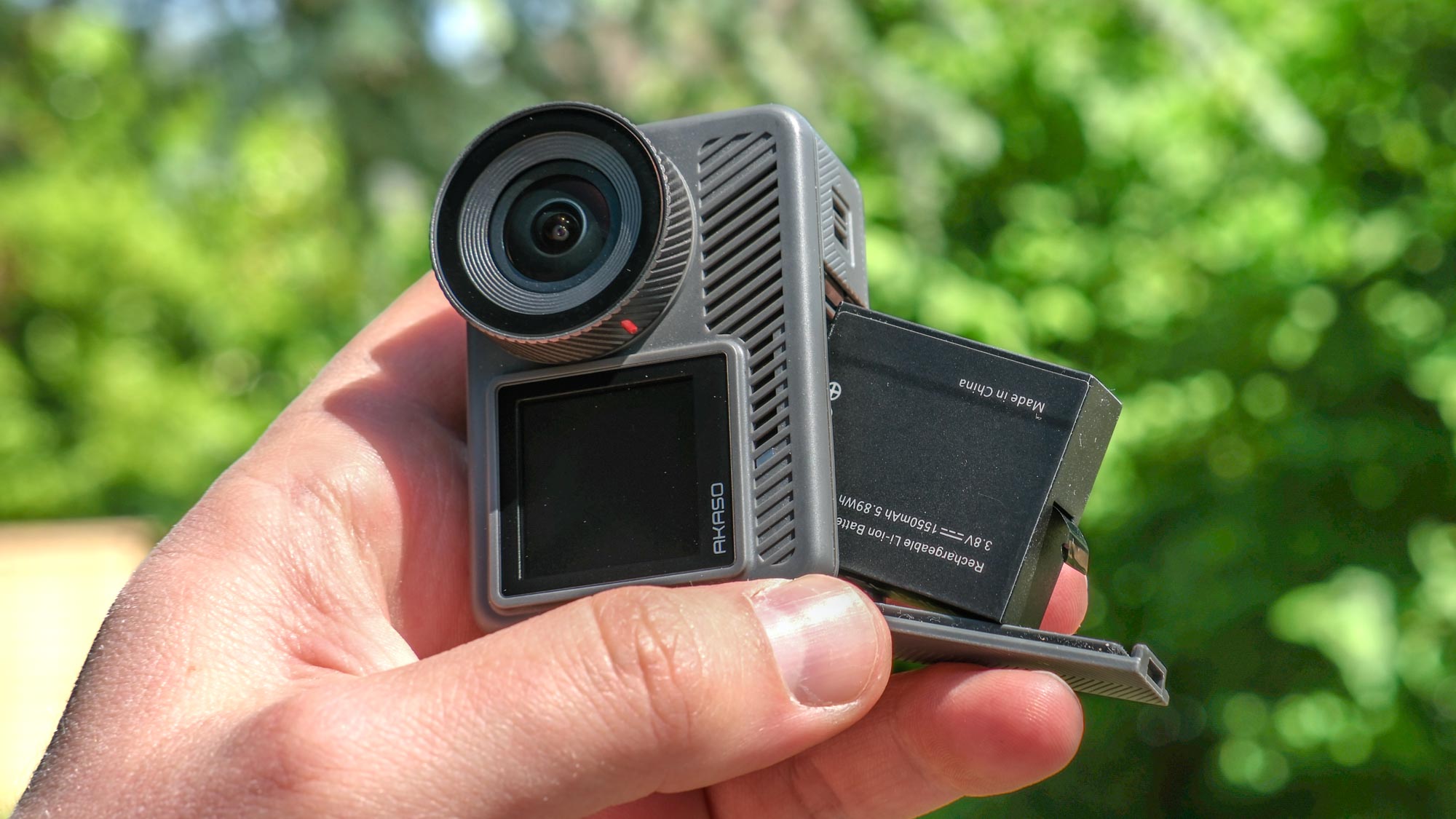
The Akaso Brave 8 Lite’s battery is the same 1,550mAh unit you’ll find in the Brave 8. This performed surprisingly well in our 4K/60p indoors testing, lasting around 80 minutes. The Brave 8 Lite also comes with a spare battery and a charging adapter in the basic package, so you won’t need to buy an extra battery or have to charge through the camera itself.
Our indoors 4K/60p testing naturally tests overheating. The Brave 8 Lite performed extremely well and didn’t overheat at all throughout the whole 80-minute battery run test. It did get extremely hot to the touch around the lens guard, but this likely won’t be an issue outdoors with the benefit of windchill.
Akaso Brave 8 Lite review: Verdict

There’s no doubt that the Brave 8 Lite is a more compelling purchase than the Brave 8, especially for budget-conscious buyers. Akaso priced the Brave 8 far too high given its features and put it into direct competition with action cameras that, while older, still outclassed it in every way.
With the Brave 8 Lite’s lower price, Akaso is finally undercutting big name rivals by a hefty margin, offering decent 4K/60p while sacrificing a few features, like resolutions over 4K, that won’t matter to many buyers.
The main problem is that Akaso still hasn’t fixed the issues preventing their cameras being serious contenders in the action camera market: internal audio and stabilization. Without those, particularly the latter, this camera is not a viable tool for anyone wanting to make serious content for, say, YouTube.
Akaso, if you’re reading, please focus on fixing the fundamentals. I want these cameras to be the humble heroes they deserve to be — they’re close now, but still too far.







